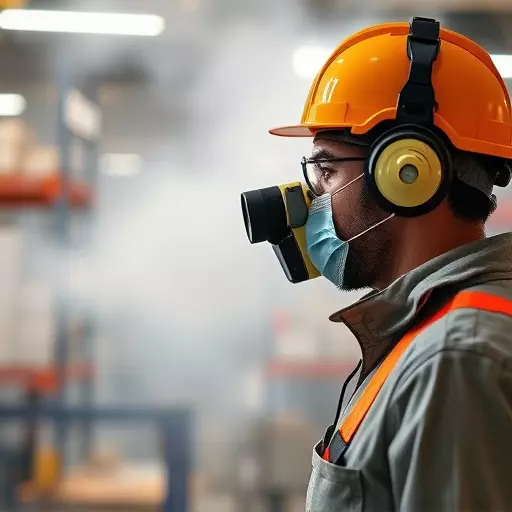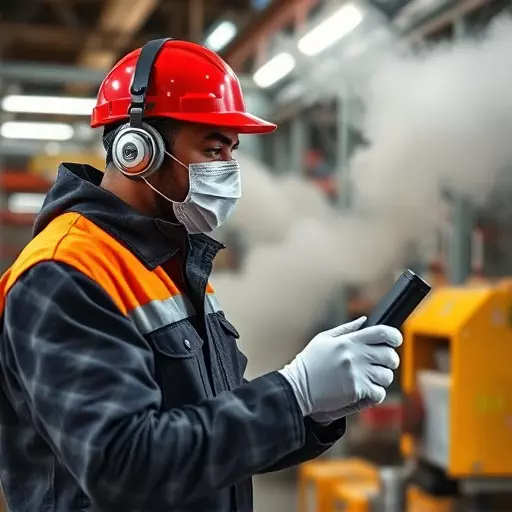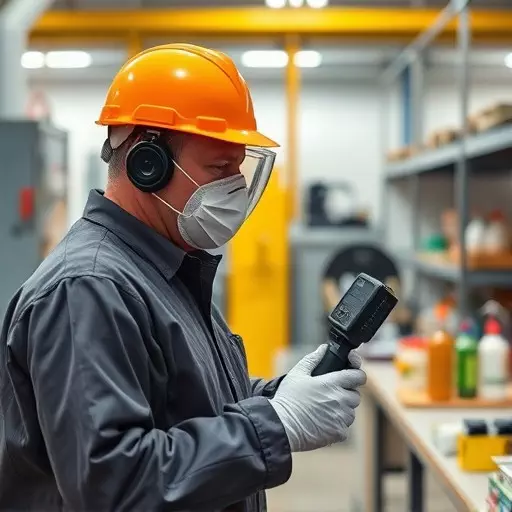Employee exposure monitoring is critical in maintaining workplace safety and adhering to health regulations in industrial settings. This process involves regular testing of airborne chemical levels using specialized equipment to ensure workers are not exposed to harmful substances. Advanced technologies like gas detectors and real-time analysis tools are employed to monitor hazardous substances, informing immediate corrective actions to safeguard employee health. The integration of these monitoring systems with strict adherence to safety protocols helps companies comply with occupational health standards while promoting a culture that values both worker well-being and operational integrity. This comprehensive approach not only prevents short-term risks but also protects against long-term health issues, ensuring continuous improvement in workplace conditions.
Industrial settings pose unique safety challenges, particularly in managing chemical exposures. This article delves into the critical practices and protocols for ensuring a secure work environment. We will explore the importance of regular safety audits, the key components that form the backbone of an effective audit framework, and the pivotal role of employee exposure monitoring in safeguarding worker health and maintaining compliance. Additionally, we will discuss the significance of workplace air quality testing, advanced hazardous substance monitoring techniques, and how to develop a strategic plan for chemical safety in industrial environments. Finally, we will outline best practices for upholding ongoing chemical safety standards, ensuring that every aspect of chemical handling is addressed with precision and care.
- Understanding the Importance of Industrial Chemical Safety Audits
- Key Components of a Comprehensive Safety Audit Framework
- Employee Exposure Monitoring: Ensuring Worker Health and Compliance
- The Role of Workplace Air Quality Testing in Safeguarding Employees
- Advanced Techniques in Hazardous Substance Monitoring
- Developing a Strategic Plan for Chemical Safety in Industrial Settings
- Best Practices for Maintaining Ongoing Chemical Safety Standards
Understanding the Importance of Industrial Chemical Safety Audits
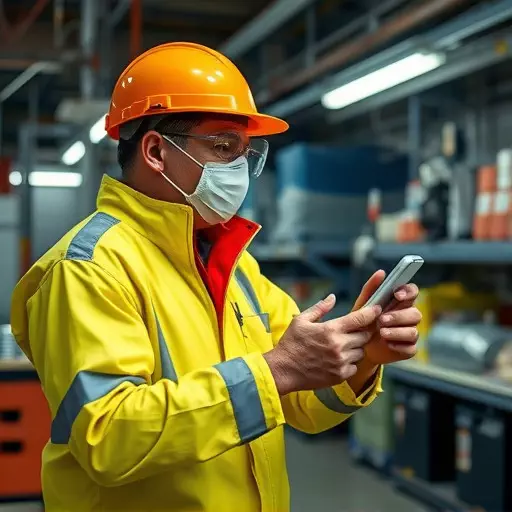
Regular industrial chemical safety audits are a critical component in safeguarding employees and maintaining compliance with health and safety regulations. These comprehensive evaluations ensure that workplace air quality is within acceptable limits, thereby protecting workers from harmful substances. Employee exposure monitoring is a key aspect of these audits, as it quantifies the extent to which workers are exposed to hazardous materials during their daily tasks. By identifying potential risks associated with chemical handling and processing, companies can implement necessary control measures to mitigate these dangers. These audits also involve the assessment of ventilation systems, storage practices for chemicals, and the proper use of personal protective equipment (PPE), all of which are essential in maintaining a safe work environment. The monitoring of hazardous substances not only helps in preventing acute exposures but also in reducing long-term health risks. Through consistent and thorough industrial chemical safety audits, businesses can ensure that their operational practices align with the highest standards of safety, thereby protecting employees and upholding a commitment to responsible environmental stewardship.
Key Components of a Comprehensive Safety Audit Framework
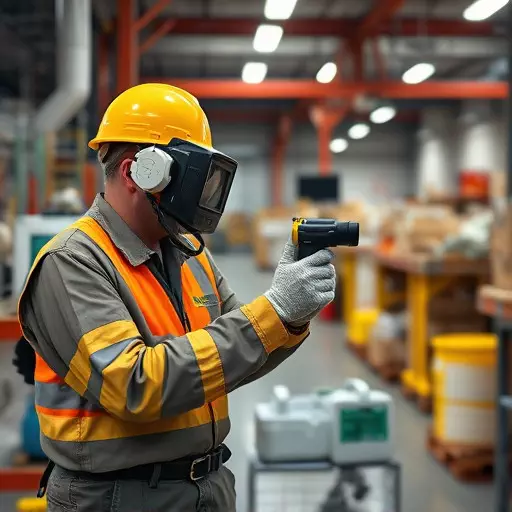
A comprehensive safety audit framework for industrial chemical settings is a multifaceted approach that encompasses various critical components to ensure the well-being of employees and compliance with regulatory standards. Central to this framework is the consistent monitoring of employee exposure to hazardous substances, which involves the use of personal protective equipment (PPE) coupled with regular sampling and analysis of airborne contaminants. This ensures that workplace air quality remains within safe limits, protecting workers from potential health risks associated with prolonged exposure. Additionally, the framework incorporates a systematic assessment of potential chemical hazards present in the environment, including the implementation of control measures to mitigate these risks. This comprehensive approach extends to the regular calibration and maintenance of monitoring equipment, ensuring accurate data collection that informs ongoing safety strategies. Furthermore, it mandates a thorough review of existing safety protocols, with an emphasis on training programs that equip employees with the necessary skills to recognize, avoid, and respond to chemical hazards effectively. The integration of these components into a cohesive framework is essential for maintaining a safe working environment, safeguarding employee health, and adhering to occupational safety and health regulations. Regular audits conducted by qualified professionals are imperative to identify deficiencies and implement corrective actions promptly, thereby ensuring continuous improvement in industrial chemical safety practices.
Employee Exposure Monitoring: Ensuring Worker Health and Compliance
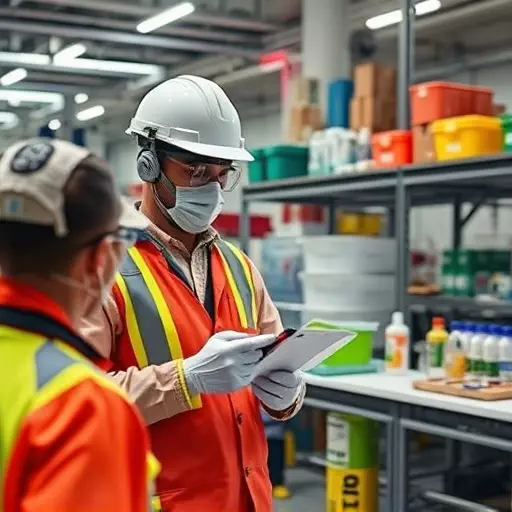
Employee exposure monitoring is a critical component in maintaining workplace air quality and ensuring the health and safety of workers in industrial settings. Regular monitoring for hazardous substances is essential to detect any harmful concentrations that may exceed occupational exposure limits set by regulatory bodies. By implementing advanced detection technologies and conducting routine workplace air quality testing, employers can identify potential risks early on, mitigate exposure, and safeguard their employees from the detrimental effects of prolonged contact with these substances. These measures not only foster a safe work environment but also ensure compliance with health and safety regulations, thereby avoiding legal repercussions and financial penalties that could arise from non-compliance.
Furthermore, the use of personal protective equipment (PPE) in conjunction with environmental monitoring provides an additional layer of protection for workers. By combining employee exposure monitoring with comprehensive training programs, companies can empower their staff to recognize hazards and take appropriate precautions, reinforcing a culture of safety that is both proactive and responsive to the dynamic nature of industrial chemical environments. Regular review and updating of exposure control plans, in line with the latest workplace air quality testing results, are indispensable for maintaining a healthy work environment and ensuring ongoing compliance with safety standards.
The Role of Workplace Air Quality Testing in Safeguarding Employees
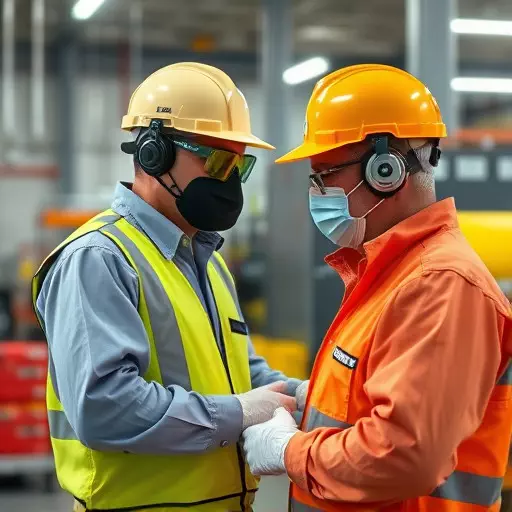
Regular workplace air quality testing is a critical component in safeguarding employees from the adverse effects of hazardous substances. This proactive approach involves the systematic monitoring of airborne contaminants that could pose significant health risks to workers. Employee exposure monitoring is pivotal in identifying potential risks early, allowing for timely mitigation measures. By utilizing specialized equipment to detect and quantify harmful particulates, gases, and vapors, companies can assess the level of danger present within their operational environment. This data-driven process enables employers to implement engineering controls or personal protective equipment (PPE) to reduce exposure levels, ensuring compliance with occupational health regulations and safeguarding employee well-being. The frequency and scope of air quality testing should be determined by the specific hazards present at the worksite, the nature of the tasks performed, and the potential for human exposure. Through diligent workplace air quality testing, organizations can effectively manage risks associated with chemical exposures, thereby maintaining a healthy and safe environment for all employees.
Advanced Techniques in Hazardous Substance Monitoring
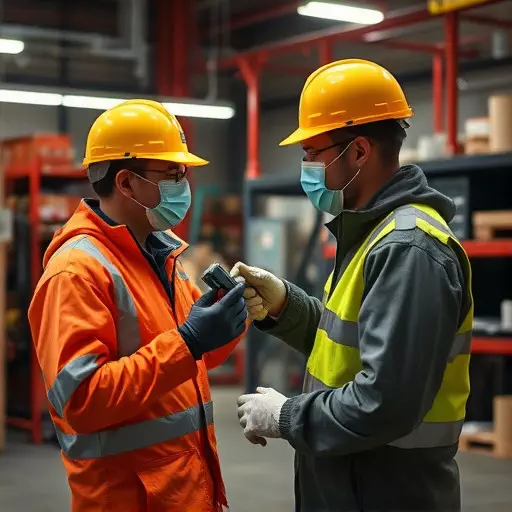
In the realm of industrial safety, the monitoring of hazardous substances is a critical function that ensures both the integrity of the workplace environment and the well-being of employees. Advanced techniques in this domain have significantly enhanced the ability to detect and measure exposure levels to potentially harmful chemicals. Employee exposure monitoring has evolved from rudimentary methods to sophisticated real-time analysis, allowing for immediate corrective actions when necessary. These advancements include the use of portable gas detectors that can quickly identify a range of hazardous gases and volatile organic compounds (VOCs). Such devices often employ advanced sensor technology, providing detailed readings of atmospheric concentrations and offering a comprehensive overview of workplace air quality testing. The integration of these technologies with software systems enables continuous monitoring, data logging, and analysis, ensuring that safety protocols are up-to-date and effective. This not only facilitates compliance with occupational health and safety regulations but also contributes to the long-term health of workers by reducing their exposure to hazardous substances.
Furthermore, the adoption of industrial hygiene best practices alongside state-of-the-art monitoring equipment underscores a commitment to maintaining high standards in workplace safety. Hazardous substance monitoring is not limited to direct employee exposure; it also encompasses indirect exposures that could occur through various pathways within the work environment. By employing a combination of direct-read and grab sampling techniques, along with more sophisticated methods like area and personal air sampling, organizations can gather comprehensive data on chemical concentrations. This multifaceted approach ensures a holistic understanding of potential risks, enabling proactive measures to mitigate exposure and protect employees from the adverse effects of hazardous substances.
Developing a Strategic Plan for Chemical Safety in Industrial Settings

In the realm of industrial safety, the proactive development of a strategic plan for chemical safety is paramount. This plan should encompass comprehensive measures to mitigate risks associated with employee exposure to hazardous substances. A critical component of this strategy involves regular workplace air quality testing. By identifying potential airborne contaminants, employers can implement engineering controls and personal protective equipment to minimize exposure levels. This rigorous monitoring not only ensures compliance with occupational health standards but also safeguards the well-being of workers. Additionally, the integration of advanced hazardous substance monitoring systems enables real-time detection and alerting mechanisms, which are instrumental in preventing adverse health effects caused by chemical exposure. These systems should be supplemented with training programs that educate employees on best practices for handling chemicals, recognizing symptoms of overexposure, and understanding the importance of reporting any concerns promptly. The strategic plan must also include clear protocols for emergency response and spill containment to address unforeseen incidents effectively. By prioritizing these elements within a comprehensive chemical safety strategy, industries can foster a safer environment for their workforce, thereby upholding a commitment to environmental stewardship and ethical operations. Regularly scheduled employee exposure monitoring should be a cornerstone of this plan, ensuring that all workers are within acceptable limits for chemical exposure and that any trends or anomalies are addressed promptly. Through the concerted effort of consistent monitoring, adherence to safety protocols, and ongoing training, industries can significantly reduce the risk of chemical-related incidents and maintain a high standard of workplace safety.
Best Practices for Maintaining Ongoing Chemical Safety Standards
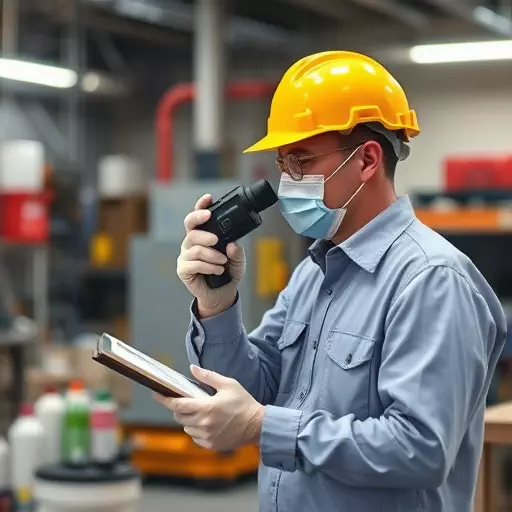
Maintaining ongoing chemical safety standards within industrial settings is a multifaceted endeavor that requires continuous vigilance and adherence to best practices. One of the most critical aspects is employee exposure monitoring, which ensures that workers are not at risk of harmful substances. Regular and systematic measurement of airborne concentrations in the workplace, through tools like air sampling pumps and direct-reading instruments, provides quantifiable data on the actual levels of hazardous substances present. This data is essential for evaluating whether protective measures are adequate and for identifying areas where exposures may be occurring. It also informs the necessary corrective actions to mitigate any identified risks, thereby safeguarding employee health.
In addition to exposure monitoring, maintaining chemical safety standards necessitates proactive workplace air quality testing. This involves the routine analysis of the atmosphere in which employees work to detect any chemical contaminants that could pose a threat. Advanced technologies such as gas detectors and infrared spectroscopy can be employed to continuously monitor for a wide range of chemicals, providing real-time data on air quality. Regularly scheduled testing, combined with immediate corrective actions when abnormal levels are detected, ensures a safe working environment and helps prevent long-term health issues associated with chemical exposure. Implementing these practices not only complies with regulatory standards but also fosters a culture of safety that is essential for the well-being of employees and the integrity of the industrial operation.
